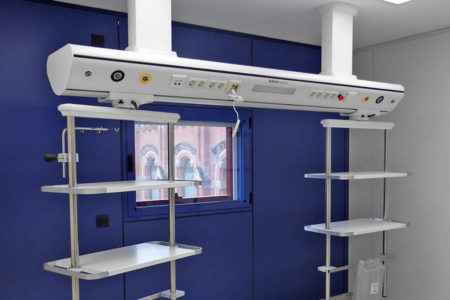Can art become a therapeutic aid for cancer patients?
Every year, on February 4, World Cancer Day is celebrated, a date to remember the need to prevent cancer, increase the quality of life of those who suffer from it, obtain better care and, ultimately, a call to unite our voices and act.
In this search for alternatives for greater well-being, we have recently learned of an interesting proposal: the union of the Vall d’Hebron Hospital and the Museu Nacional d’Art de Catalunya (MNAC) to promote new treatments through art.
This alliance seeks to carry out different actions aimed at exploring the potential of art as a tool for patients and families to enjoy its therapeutic and emotional benefits.
In short, it is about making the stay in the Vall d’Hebron more humane and pleasant and ensuring that hospital users achieve therapeutic benefits through the values and well-being that art can provide.

An innovative project
This pioneering initiative is part of a transversal program recently approved by the Catalan Institute of Health that seeks to advance the use of the therapeutic value of different artistic and cultural disciplines. In this way, it values museums and cultural institutions as health assets, that is, as agents with the potential to be beneficial for the health of citizens.
The collaboration agreement between both entities will begin with a project aimed at studying new health art therapies in the field of psychology.
The initiative will start with women who have post-traumatic stress disorder, of diverse cultural origins (immigrants or refugees) and who suffer from situations of social vulnerability.
The psychological treatment will combine new didactic strategies from the National Museum and the principles of therapeutic intervention for emotional support in situations of fragility of women established by the team of Dr. Josep Antoni Ramos-Quiroga, Head of the Vall d’Hebron Psychiatry Service .
The patients will receive psychological treatment divided into two groups: one of them will do it entirely in the hospital and the other will go to the MNAC to check if the fact of being treated in a non-health environment, such as a museum, and applying to the treatment sessions the advantages of art, it gives them more satisfaction and improves their quality of life, as well as reducing the symptoms derived from post-traumatic stress.
Depending on the results, the experience can be expanded to other groups such as patients with Attention Deficit Hyperactivity Disorder (ADHD) or autism. Likewise, the application of art in health has already given promising results with patients with depression or Alzheimer’s.
The joint project of Vall de Hebron and the National Museum is specifically based on the STAIR Therapy model, according to which to recover from trauma, emotional regulation is as important as working on interpersonal functioning and incorporating resources that improve self-perception. and socialization, especially in the aspect of receiving and giving support.
“The patients will receive psychological treatment divided into two groups: one of them will do it entirely in the hospital and the other will go to the MNAC to check if the fact of being treated in a non-health environment, such as a museum, and applying to the treatment sessions the advantages of art, it gives them more satisfaction and improves their quality of life, as well as reducing the symptoms derived from post-traumatic stress.”

The importance of welcoming hospital environments
Creating welcoming hospital environments is crucial to patients’ well-being, and has been proven to significantly contribute to their healing process.
Among other things, the best design of hospital equipment or the commitment to biophilic design generate great benefits for both patients and healthcare personnel:
- reduction of stress and anxiety,
- positive stimuli for healing,
- greater promotion of doctor-patient communication,
- improving the satisfaction of all parties involved,
- a good impact on mental health,
- the comfortable support of family and caregivers…
Not surprisingly, healthcare facility environments can often be intimidating and anxiety-producing, especially for patients.
A cozy environment, with warm colors, soft lighting and spaces designed to provide comfort without losing effectiveness and pragmatism, can be very therapeutic.










